


Apr 07, 2025
-
By Julia
When we talk about tools for product managers, the conversation often revolves around the usual suspects—roadmapping platforms, task trackers, and product analytics tools. But as product management continues to evolve, so do the responsibilities and the tools required to support them.
In 2025, the product management landscape will be more dynamic than ever. According to a recent report by ProductPlan, over 68% of product managers now rely on four or more tools daily to stay on top of everything from customer feedback and feature prioritization to collaboration, sprint planning, and go-to-market strategy.
The modern product manager juggles a wide range of activities—understanding customer needs, aligning cross-functional teams, managing releases, measuring product success, and constantly iterating based on data. Relying on the right tools not only makes these tasks manageable but also sets the foundation for building successful, customer-centric products.
Whether you’re just starting your journey as a PM or you’re a seasoned product leader looking to refine your toolkit, this curated list of the 20 best product management tools in 2025 will help you discover platforms that support everything from product discovery to delivery—and everything in between.
Let’s dive in and explore the tools that are transforming how product managers work today.
A product management tool is a software application that helps product managers and their teams plan, build, launch, and improve products more effectively. These tools are designed to centralize tasks, streamline collaboration, and improve decision-making throughout the product lifecycle — from ideation to delivery and optimization.
Key Functions of a Product Management Tool


Here we have discussed some of the best 20 product management software to help you create your product roadmap. Let's get started -:

Best for: AI-powered product planning, documentation, and team collaboration.
Kroolo revolutionizes product management by combining AI intelligence, streamlined workflows, and deep integrations. Product teams can create visual roadmaps, manage sprints and backlogs, generate product documentation, and automate workflows—all in one platform. With over 30+ integrations, real-time collaboration, and custom AI agents, Kroolo helps teams work smarter and move faster.
Modern product teams that want to leverage AI to move faster and smarter. It bridges the gap between strategy and execution while providing tools to automate, document, and manage with ease.

via Craft.io
Best For: Product teams looking for built-in, industry-leading best practices
Craft.io is a comprehensive product management platform designed to streamline the entire product lifecycle—from collecting user feedback and defining features to managing portfolios and aligning strategy with execution. What sets Craft.io apart is its built-in best practices, enabling product managers to move faster and smarter without reinventing the wheel.
The platform offers a powerful “Guru Layer,” which includes ready-to-use templates for epics, user personas, and prioritization frameworks, helping even seasoned PMs save time and stay aligned with proven methodologies.
Key Features

via Feedbackly
Ideal For: Teams focused on user experience and emotion-driven product development
Feedbackly is more than just a feedback collection tool—it's a customer experience platform designed to uncover what users feel and why.
What makes Feedbackly stand out is its integrated sentiment analysis engine, which digs deeper into feedback to detect the emotional tone behind user responses. This allows teams to prioritize product changes based not only on what users say—but how they feel.
Key Features
Who Should Use It
Product and UX teams that want to understand the emotional drivers behind user feedback and optimize their product accordingly.

via Pendo
Ideal For: Product teams seeking deep user insights and feature adoption tracking
Pendo is a robust product experience platform that combines powerful analytics with in-app feedback collection to help product teams understand how users interact with their product. From tracking feature adoption to identifying friction points in the user journey, Pendo offers the insights needed to guide smarter product decisions.
Key Features
Who Should Use It
Product teams looking to increase user engagement, measure adoption, and collect feedback in real-time to guide product development.
5. ProdPad
 via ProdPad
via ProdPad
Ideal For: Teams looking for lean, end-to-end product management with strong idea-capturing
ProdPad is a lean, flexible product management platform designed to help teams capture ideas, define product strategy, and maintain alignment across the organization. It offers a well-structured approach to building product roadmaps while allowing teams to manage ideas, customer feedback, and product specs in one centralized space.
What sets ProdPad apart is its intuitive goal-setting and idea-management capabilities. Teams can organize goals by urgency and future planning, using visual roadmaps to communicate product direction.
Key Features
Who Should Use It
Product managers and teams looking for a comprehensive solution to manage the full product lifecycle, from idea capture to execution, with a strong emphasis on strategic planning and collaboration.
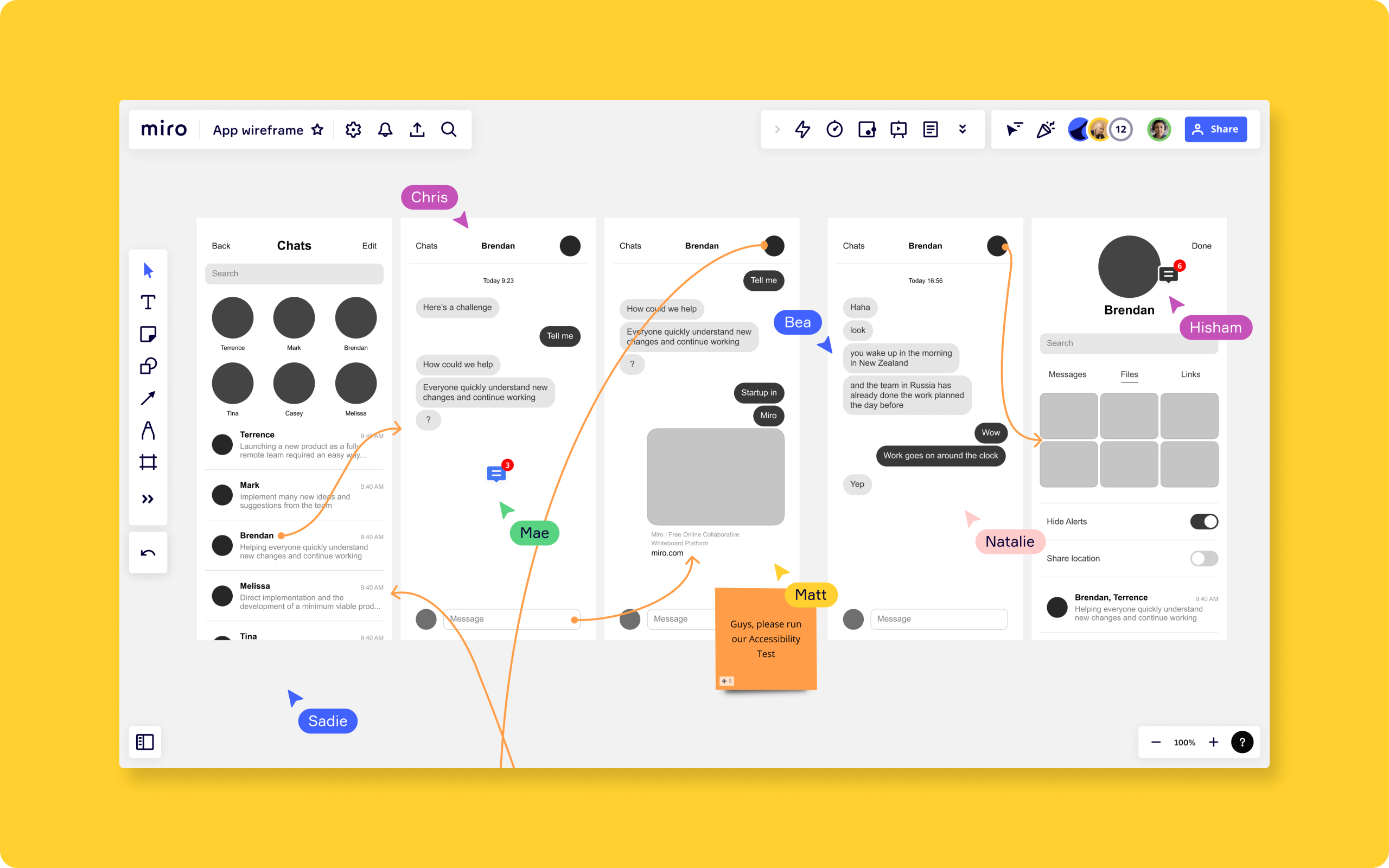 via Miro
via Miro
Ideal For: Remote teams that thrive on visual collaboration and creative planning
Miro is a powerful online whiteboard platform designed to help teams collaborate visually from anywhere. Whether you're mapping out user journeys, brainstorming feature ideas, or building out product workflows, Miro provides a flexible canvas to bring everyone together in real time.
Its intuitive drag-and-drop interface, combined with an extensive library of templates, makes it easy to turn abstract product ideas into structured plans.
Key Features
Who Should Use It
Product managers and cross-functional teams who rely on visual thinking to plan and ideate, especially those working in remote or hybrid environments.

via Canny
Ideal For: Product teams that prioritize roadmap planning based on real user feedback
Canny is a user feedback management tool tailored for product teams who want to make informed, user-driven decisions. It helps collect feedback from various channels, organize it effectively, and tie it back to specific user accounts—ensuring your most valuable voices are heard. With Canny, product managers can prioritize features, plan updates, and communicate changes transparently to users.
Key Features
Who Should Use It
Product teams focused on building features based on user input, and organizations that want to foster a transparent, feedback-driven product development process.
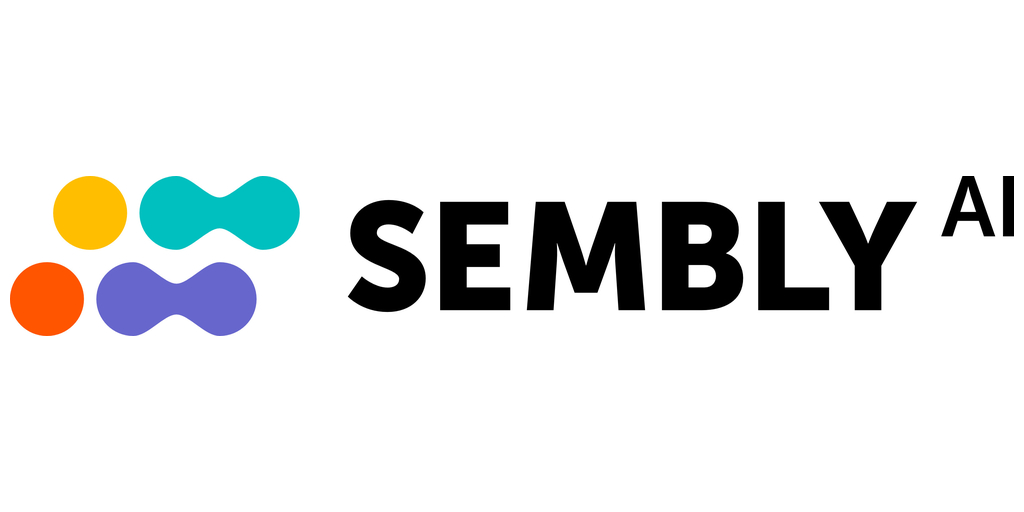
via Sembly AI
Ideal For: Product managers looking to automate meeting tasks and streamline product development with AI
Sembly AI is a powerful, AI-driven meeting assistant designed to transform how product teams manage discussions, decisions, and documentation. It captures, transcribes, and summarizes meetings automatically, turning spoken conversations into actionable insights. From internal stand-ups to client syncs, Sembly ensures nothing important slips through the cracks.
Also, whether you need to refine user stories, generate sprint summaries, pull documents, or structure a roadmap—Sembly helps you do it all via conversational input.
Key Features
Who Should Use It
Product managers, marketing leads, and cross-functional teams that want to turn conversations into action—while saving hours on documentation and follow-ups.

via FigJam
Ideal For: Teams seeking a collaborative digital whiteboard for brainstorming and planning
FigJam is Figma’s collaborative online whiteboarding tool, built to enhance brainstorming, planning, and ideation in product teams. With over 300 ready-to-use templates and a wide array of visual tools, FigJam supports structured creativity across everything from product vision boards to agile retrospectives.
Why we like FigJam: It offers a seamless experience for both synchronous and asynchronous collaboration. Product teams can sketch ideas, build decision trees, conduct retros, and co-create user journeys—all in real time. FigJam also supports commenting, voting, and live chat/audio, making it ideal for remote or hybrid teams.
Key Features
Who Should Use It
Product teams, designers, and remote teams looking for a fun, visual, and flexible way to collaborate, plan, and ideate in real time.

via Aha!
Ideal For: Product teams focused on strategic roadmapping and idea prioritization
Aha! is a comprehensive roadmap platform built for product teams to craft and share strategic plans. More than just roadmaps, Aha! also supports goal setting, OKR alignment, and customer-driven prioritization—making it a well-rounded solution for product development.
Key Features
Who Should Use It
Product managers and strategy teams looking to align roadmap planning with company goals and crowdsource ideas from users for feature prioritization.
via Productboard
Ideal For: Product teams needing a central hub for insights, prioritization, and stakeholder alignment
Productboard is a product management platform designed to help teams collect user insights, prioritize features, and create interactive roadmaps that align with business goals. With a customer base of over 6,000, it offers tailored support and onboarding for organizations of all sizes—especially enterprises.
Key Features
Who Should Use It
Product managers and teams looking for an end-to-end solution to collect insights, prioritize features, and build roadmaps that reflect both customer needs and business objectives.
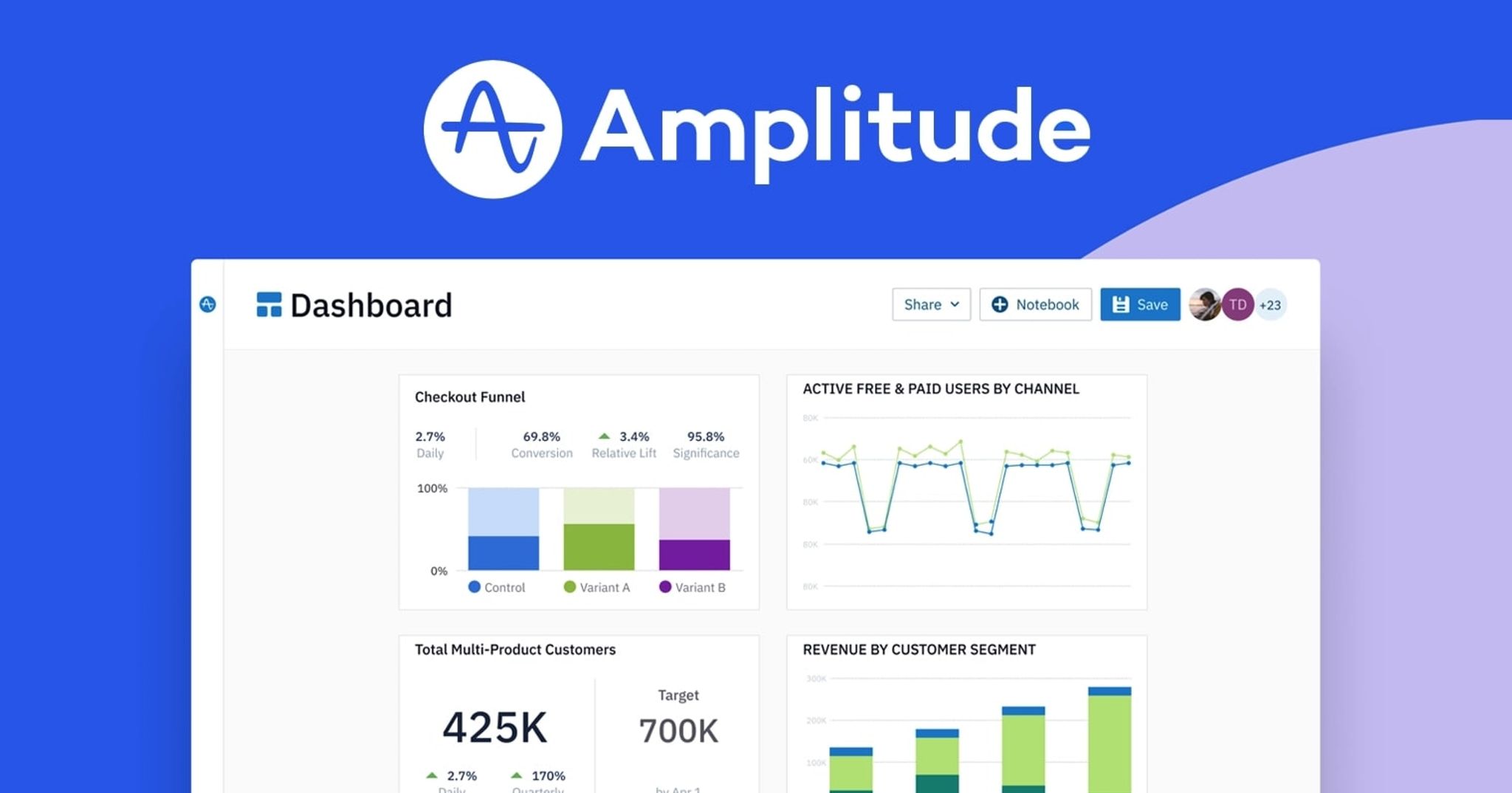 via Amplitude
via Amplitude
Ideal For: Product teams focused on data-driven decision-making, growth analytics, and optimizing user engagement and retention
Amplitude is a robust product analytics platform designed to help teams deeply understand user behavior, track key performance indicators, and enhance product experiences. With capabilities like behavioral cohorting, funnel analysis, and retention tracking, Amplitude empowers teams to make smarter product decisions based on real data.
Key Features
Who Should Use It
Teams aiming to optimize product performance through deep behavioral insights, particularly those focused on growth, experimentation, and user retention.

via UserTesting
Best For: Moderated usability tests and real-time user feedback
UserTesting empowers product teams to connect directly with users through moderated and unmoderated usability tests. It allows you to watch real people interact with your product, website, or prototype, providing authentic, actionable feedback at every stage of the development cycle.
It captures exactly how users feel and react, helping teams identify usability issues, optimize user experiences, and validate ideas faster. The combination of visual feedback and emotion-tracking gives product managers a unique edge in making user-centric decisions.
Key Features
Who Should Use It
Product teams seeking in-depth user feedback to improve UX, validate product decisions, and uncover friction points through direct observation of real users.
 via Airtable
via Airtable
Best For: Flexible, spreadsheet-database hybrid for product planning and strategy
Airtable is a cloud-based productivity platform that blends the simplicity of a spreadsheet with the functionality of a relational database. It’s designed for teams that want to customize workflows for managing projects, ideas, and product roadmaps without writing code.
Key Features
Who Should Use It
Product and cross-functional teams seeking a highly customizable, no-code tool to manage product strategy, OKRs, and project workflows collaboratively.
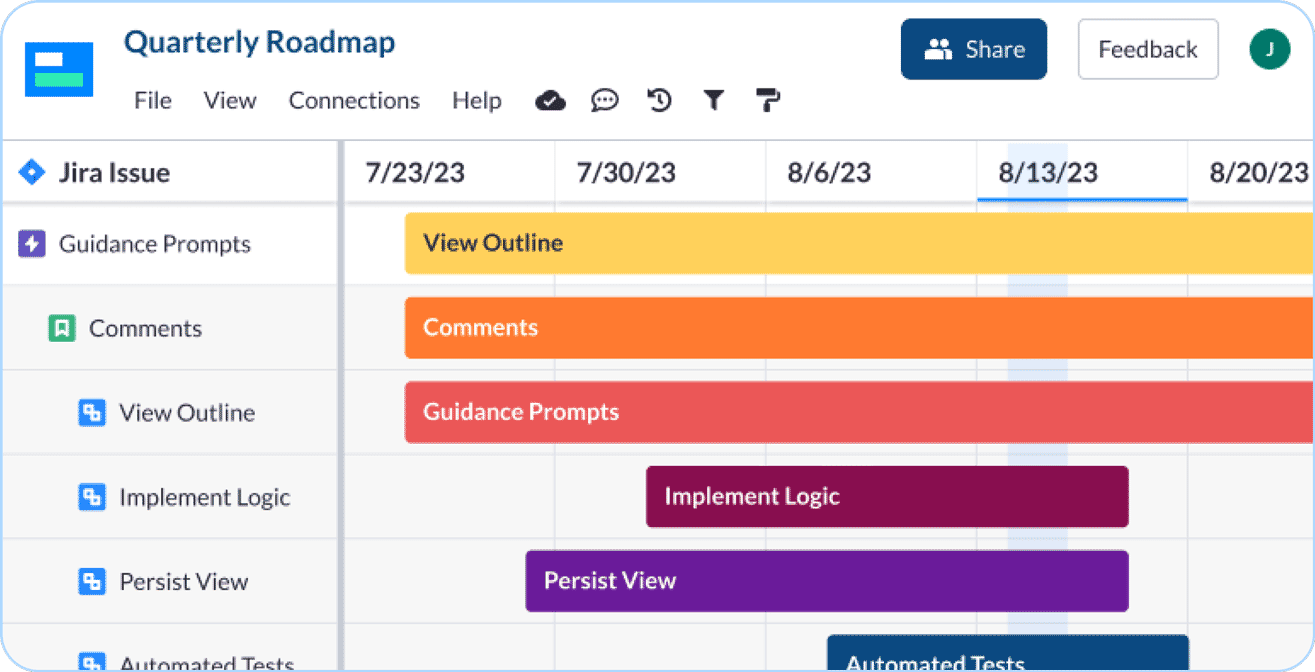 via Visor
via Visor
Best For: Project management collaboration with real-time updates
Visor is a cloud-based product management platform that simplifies the product development process by enabling seamless collaboration, streamlined planning, and effective progress tracking. It’s particularly useful for teams that want to manage product roadmaps from ideation to launch—all within a single platform.
It’s also fully cloud-based, ensuring that team members can work from anywhere without missing a beat. Its flexible API and integrations allow it to sync with other tools in your stack, making it a solid addition to any workflow.
Key Features
Who Should Use It
Teams looking for a collaborative, cloud-based product management tool to track progress, prioritize features, and coordinate across departments—especially those who need a visual and structured way to manage product development.
Best For: Product discovery and customer insight-driven roadmapping
Reveall is a product management platform built specifically for customer-centric product discovery. It helps teams move from feedback to action by centralizing user insights, enabling data-informed decisions, and simplifying the roadmap planning process. With Reveall, teams can ensure they’re building products that align with actual user needs and business goals.
Key Features
Who Should Use It
Product teams that prioritize product discovery, user research, and customer-driven development. Ideal for organizations that want to turn qualitative feedback into strategic product actions and plan with data-backed clarity.

via VEED
Best For: Easy video creation for product demos, walkthroughs, and team training
VEED is a browser-based video editing platform tailored for simplicity and speed. It enables product teams to produce polished video content like product demos, onboarding tutorials, customer feedback summaries, and feature showcases—without requiring prior video editing expertise.
Key Features
Who Should Use It
Product managers, marketers, and customer success teams need a fast, intuitive way to create product-related video content for onboarding, announcements, and customer education.
 via Mixpanel
via Mixpanel
via Mixpanel
Best For: In-depth in-product analytics and user behavior tracking
Mixpanel is a powerful product analytics platform designed to help teams understand how users interact with their products. It provides detailed insights into user flows, feature adoption, funnel performance, and retention trends, enabling data-driven decisions that improve engagement.
Key Features
Who Should Use It
Product managers, analysts, and growth teams seeking detailed insight into how users interact with digital products and features.
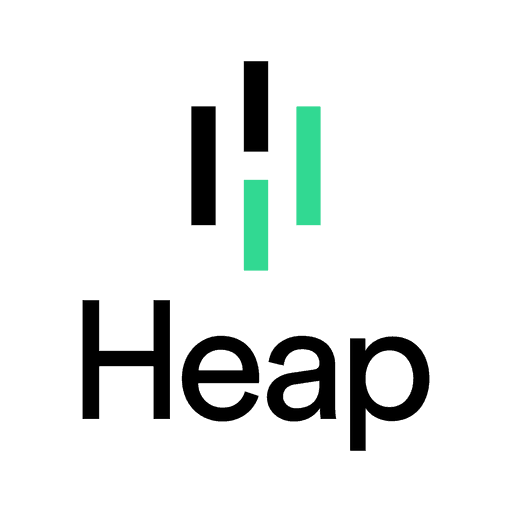
via Heap
Best For: Automated user interaction tracking and customer journey optimization
Heap is a product analytics tool that automatically captures every user interaction—clicks, swipes, page views, and more—without requiring manual event tagging. It provides a complete picture of the customer journey, allowing teams to discover drop-offs, friction points, and hidden opportunities.
Key Features
Who Should Use It
Product teams, UX designers, and marketers looking for effortless analytics, faster insights, and customer journey optimization.
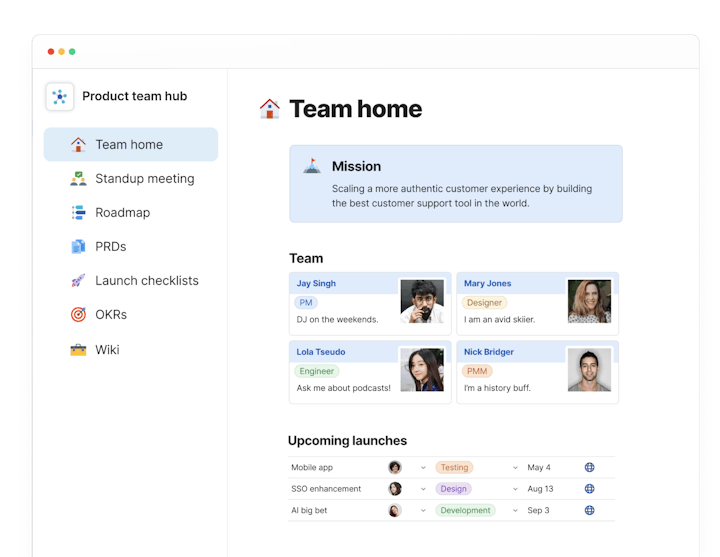
via Coda
Best For: Teams that want a flexible, all-in-one workspace
Coda brings together the best elements of documents, spreadsheets, presentations, and apps into one powerful tool. It's perfect for product teams who need a single place to manage everything—from roadmaps and OKRs to meeting notes and customer feedback.
It’s especially valuable for cross-functional teams that want to avoid switching between apps by building customized workflows inside a single document. You can create project trackers, team wikis, knowledge hubs, and even lightweight CRMs—all inside Coda.
Key Features
Conclusion
You need the right tools to do product management right.
The 20 tools we've covered each bring unique strengths—helping product teams streamline workflows, improve collaboration, and stay focused on what matters most: building great products.
But at the core of successful product management lies clarity, speed, and strategy—and that’s where Kroolo shines. With AI-powered features for road mapping, sprint planning, automation, documentation, and real-time collaboration, Kroolo is built to supercharge modern product teams.
Ready to level up your product management? Book a Demo and try Kroolo today. Experience the AI-powered future of product success.
Tags
AI